DES eLearning
This is a comprehensive introduction to the world of digital transformation. This course covers topics from the enabling technologies to the transformation roadmap for strategy, to examples of useful management tools and techniques to help you.
36 self-paced interactive eLearning modules with knowledge checks and student quizzes are available for you.
Table of Contents
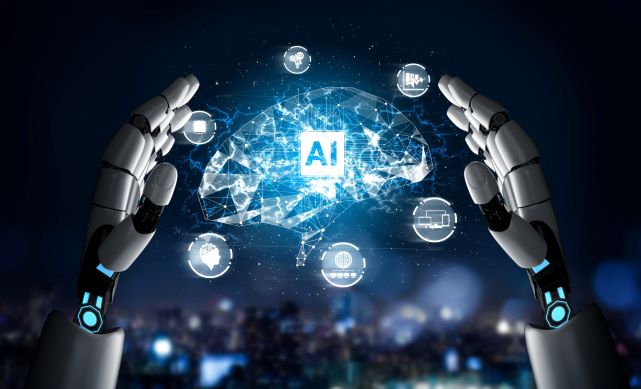
Artificial Intelligence
Artificial Intelligence (AI) is a field of computer science which focuses on creating machines that can engage in intelligent behaviors. It is a mixture of computer science, physiology, and philosophy.
It has a binding element that all the different forms of AI have in common – the creation of machines that can “think“, and make intelligent decisions. In this module, we give you an introduction to AI covering:
- The Four Types of Artificial Intelligence
- Barriers to Use of AI in the Business World
- How AI Affects Employment
- AI’s Effects on Society
- Superintelligence
You will gain an understanding of the trends and issues in AI, and be able to form a point of view of AI’s likely impact on the industries and clients you serve.

Augmented Reality, Virtual Reality and Mixed Reality
The purpose of this module is to introduce you to the concepts and examples of Augmented, Mixed, and Virtual Reality.
As is often the case, with new and fast evolving technologies, terms easily get intermixed and confused with each other. In this module, we will attempt to clarify this, and we will show how they relate to each other. In addition, you will learn some of the present and future applications of these technologies, as we explain:
- Key Characteristics of AR
- Key Characteristics of VR
- Milgram’s Virtual Reality Continuum
- Looking into The Future
You will come to understand that augmented reality grew as a reaction to virtual reality, and mixed reality seeks to take advantage of the benefits of both, on a continuum between the reality and the virtual world.

Automation
Automation means the use of computer software, machines or other technology to carry out tasks once performed by human beings or, increasingly, to tasks that would otherwise be impossible. There are many types of automation, ranging from the fully mechanical to the fully virtual, and from the very simple to the mind-blowingly complex. This module provides you a basic grounding in Automation. For our purposes, there are two basic types of automation: software automation and industrial automation.
Software Automation – most of the information on automation that you can find online is about software automation. This involves using software to carry out tasks which humans usually do when they are using computer programs.
Industrial Automation – industrial automation is all about controlling physical processes. It involves using technologies and automatic control systems to automate industrial processes without significant human intervention.

Big Data
Let us introduce you to Big Data. Big data refers to a process that is used when traditional data mining and handling techniques cannot uncover the insights and meaning of the underlying data. Data that is unstructured or time sensitive, or simply very large cannot be processed by relational database engines. This type of data requires a different processing approach called big data, which uses massive parallel processing, analysis and correlation. This module covers:
- The Changing Face of Big Data
- The Evolution of Big Data
- Harnessing Big Data
- Big Data Ecosystem
- From Data to Decisions
Importantly, big data reflects the changing world we live in. The more things change, the more the changes are captured, and recorded as data. Most data collected now is unstructured and requires different storage and processing than that found in traditional relational databases. The Internet has democratized data, steadily increasing the data available while also producing more and more raw data. Data in its raw form has no value. Data needs to be processed in order to be valuable.

Blockchain
Alex Tapscott, the Author of ‘The Blockchain Revolution’ defines Blockchain as follows:
“Blockchain is a vast, global distributed ledger or database running on millions of devices and open to anyone, where not just information but anything of value — money, but also titles, deeds, identities, even votes — can be moved, stored and managed securely, and privately. Trust is established through mass collaboration and clever code rather than by powerful intermediaries like governments and banks”.
In this module, we cover essential information:
- What Is Blockchain?
- The Evolution of Web to Blockchain
- The Four Major Functions of Blockchain
- Examples of Use Cases by Sector/Service Area
- Five Important Notions
- Obstacles to Adoption
This will prepare you for further study on blockchain and equip you to form a point of view and identify issues in your sector or industry.

Cloud Computing
For developers, cloud computing provides increased amounts of storage and processing power to run the applications they develop. It also enables new ways to access information, process and analyze data, and connect people and resources from any location anywhere in the world.
For end users, cloud computing offers all those benefits and more. A person using a web-based application isn’t physically bound to a single PC, location, or network. Applications and documents can be accessed wherever, whenever.
In this module, you will gain a solid grounding on cloud computing through an exploration of the following topics:
- Cloud as an IT Strategy
- The Five Cloud Characteristics
- The Three Cloud Service Models
- The Four Cloud Deployment Models
- The Benefits of Cloud Computing
We also discuss the opportunities and challenges cloud presents.

Cold Calling Essentials
As a consultant or as a salesperson, without the first conversation with a new customer, you cannot instigate change. You cannot create a new relationship. And you cannot grow a business.
Cold Calling is perhaps the most feared and misunderstood activity in B2B and B2C business development. Yet it is essential to the success of any business. It can be liberating, empowering and fulfilling. And it is a technique that can be easily taught, personalized, and transferred.
Through this module, we introduce you to the essentials of cold calling:
- A Definition of Cold Calling and its Effectiveness
- Essential Guidelines for Cold Calling
- Examples of Cold Call Scripts
- Dealing with Objections
- Do’s and Don’ts in Cold Calling
The key intent of this module is to enable you with the basics you can practice and get you to understand how important cold calling is in consulting

Communicating
Most people leaving MBA or undergraduate courses have mastered most of the protocols and mechanics of business or academic communications for a single audience with a static set of needs. But this alone is not enough to meet the very precise demands of consulting.
For consultants, communication is very often the value and the product their clients request, or at least expect.
In this module, you will learn how to do the necessary work to understand clients’ needs, at every stage of an engagement, by exploring:
- What is Communication?
- Why is Communication So Important in Consulting?
- The Pyramid of Communication
- Effective Writing
- Public Speaking
- Non-Verbal Communication
- Effective Listening
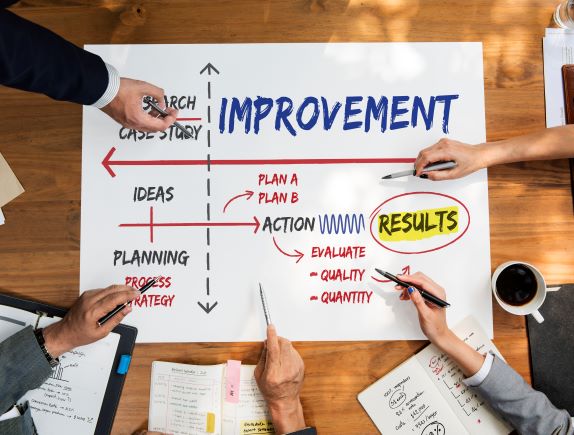
Developing A Business Case
A Business Case is a comprehensive effort to obtain approval, or financial commitment to initiate a project of any type. Typically, it is a very well-structured written document, but it can also be in form of a detailed presentation.
The driving and underlying reason of the business case is that whenever some form of financial investment is required, whether in tools, products, resources, or in company effort, it should be supported by specific business needs or requirements.
In this module, you will learn the essentials of business case development:
- What is a Business Case?
- What is the Difference Between a Business Plan or Proposal and a Business Case?
- Why is a Business Case necessary?
- Who is Responsible for Building the Business Case?
- The Eight steps to a Business Case
- The Elements of a Business Case
- Essential Sections of a Business Case

Digital Technologies and Platforms
The ultimate challenge for any business is how fast and how far to go on the path to digital transformation.
In this module, we provide an introduction to the basic technologies that are the cornerstones of the digital revolution.
What are the drivers, and what are the challenges?
This module covers:
- The Key Enablers and Accelerators
- Four Drivers of The Digital Economy
- Digital Transformation Challenges
We also provide you with a basic understanding and overview of cloud computing, as it forms the basis for anything else digital.

Effective Presentation Skills
Great speakers aren’t born, they are trained. Presenting is a skill, developed through experience and training. About 90 percent of what we learn is through what we see, watch or read, and what we hear.
So, what makes a presentation effective? An effective presentation should successfully introduce a topic to an audience while achieving the expected or Intended results.
In this module, we will help you prepare and execute effective presentations though study of the following topics:
- What Is an Effective Presentation?
- The Natural Fear, and Dealing With It
- How to Plan and Organize Your Presentation
- Presentation Sequence
- Presentation Style and Tips
- How to Create and Use Effective Visual Aids

Identifying Business Issues and Opportunities
In a target-rich environment, there are more opportunities than you could ever handle. Generally, though, not all opportunities are right for you or your company, so the critical part is identifying opportunities that are right for you.
Arguably, opportunity and business issue identification are the first steps in the process of discovering a new client, and in uncovering the opportunity to perform an engagement. Issue and opportunity identification is a key skill for business generation and growth.
This module teaches you this skill by exploring these topics:
- Introduction to Identifying Opportunities
- Porter’s 5 Forces
- The 5 Cs
- The BCG Matrix
- SWOT Analysis
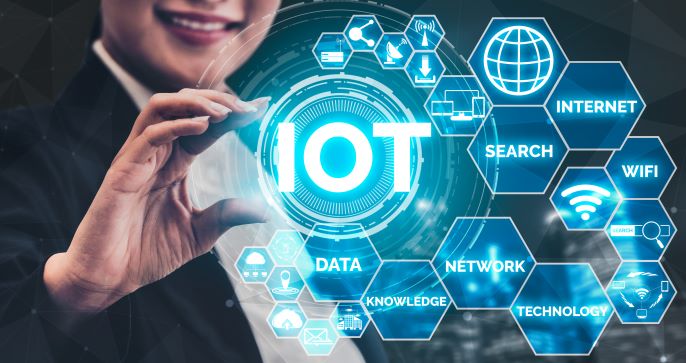
The Internet of Things
What is the Internet of Things, also called IoT? The Internet connects all people, so in a way we can call it the internet of people.
However, there are billions of devices that have readers, sensors, microchips, and cameras that either already have or can have connectivity.
So, in the same way as the internet is ‘for people’ we can also say that the internet is also “the Internet of Things”.
In this module you will learn:
- What is The Internet of Things
- How IoT Could Affect Us
- Why is This Happening?
- Why Does it Make Sense?
- The Industrial Internet of Things
- The Scope and Magnitude of IoT
We also provide a comparison to cloud computing to help set that in context, and we discuss the challenges for IoT.

Managing a Digital Project
So, what is a Digital Project? Most people immediately think of websites, content, online advertising and campaigns, social media, events, and videos.
While this is of course true, a digital project is much more than that. In today’s world, any business transformation in a company touches the digital world in how it interacts with employees, suppliers, customers, government agencies, business partners.
Digital projects touch on the following 3 areas:
- The company’s business model
- The customer experience, whether internal or external
- The company’s business operations and processes
Any project today that has an impact on or alters any of these areas will have a high degree of digital embedded in it. In this module, you will learn:
- What is Digital Project Management?
- How is a Digital Project Different?
- Digital Project Manager Responsibilities
- Digital Project Manager Must-Haves
- Digital Project Manager Basic Skills
- Digital Project Management Methodologies
- Digital Project Management Tools

Managing Project Scope
To understand project scope management, we must first understand project scope, which describes the product, processes, or services to be delivered.
Defining project scope is critical to the success of the project since it spells out exactly what the product, services, and/or deliverables of the project look like.
Conversely, poor scope definition might lead to cost increases, rework, schedule delays, and poor morale.
This module helps you understand and prepare for scope management by exploring the following topics:
- Managing Scope – What Does It Mean?
- Collection of Requirements
- Tools and Techniques to Collect Requirements
- Documentation of Requirements
- Scope Verification
- Scope Change Control

Managing Stakeholder Expectations
An expectation is a strong belief that some things will happen in the future. Or that someone or something will help us achieve the things we expect to happen.
A stakeholder is a person or part of a group who has a vested interest or “stake” in a project or initiative. They have an interest in the success of the project.
Stakeholders can have either a positive or a negative influence on the project and its success. Stakeholder expectations depend on a lot of factors and situations, and on the stakeholder. Expectations and requirements can be based on myriad functional and non-functional needs, almost always aligned with business strategy or innovation.
In this module, you will learn:
- What Is Stakeholder Expectation Management?
- Why Do We Manage Stakeholders?
- Things to Consider About Stakeholders
- Indications of Misalignment – and How to Fix
- Getting Stakeholders on Your Side
- Six Tips for Managing Stakeholders

Managing Virtual Teams
In today’s world, so much of what we do for work is done by teams of people who are in different physical locations, and often in other parts of the world, and in different time zones.
Whether we like it or not, this is how business is conducted today. Companies are going more and more regional, if not global. While this is certainly true for our clients, it also holds true for consulting companies. The talent required to serve clients is in other cities and countries.
This module will introduce you to the advantages and disadvantages of virtual teams, success factors, methods and tools to work in the virtual world. As you progress through this module, you will learn:
- Virtual Teams: Advantages and Disadvantages
- The Different Types of Virtual Teams
- Skills Required to Function Effectively
- The Role of Leadership in Virtual Teams
- The Required Success Factors

Managing Your Time
Time Management is the process of allocating time effectively, so that the right amount of time is associated with the most appropriate and relevant activities.
People with good time management habits excel in life and at work, compared to others. They have a clear vision of their long-, medium- and short-term goals in work, and in life. They do this by carefully breaking these goals down into smaller units, and then translate these into effective to-do lists, which consist of individual tasks.
Why Is Time Management Necessary?
- To save time in what we do and how we perform tasks
- To reduce the stress in our daily life
- To function more effectively in our job responsibilities
- To be more productive in how we do our job
People who manage their time well are continuously effective at completing the tasks on their to-do lists. We can think of time management as a microcosm of project management. If we are not good at managing time, we cannot function effectively in life or on projects.

Owning a Digital Project or Initiative
Digital initiatives tend to cross functional and department lines and boundaries, involve multi-disciplinary teams, are executed in different ways, and finally, the ROI associated with them can be difficult to prove and calculate.
We will highlight what we feel is true ownership for a digital project and initiative, and illustrate the similarities and the differences between ownership, sponsorship, project management, and the project stakeholders.
You will learn what it means to own or be responsible for a digital project or initiative, and how to be successful in its execution, including:
- The Value of Engaged Executive Sponsors
- Project Sponsorship vs Project Management
- Traits of an Effective Project Sponsor
- Must-Look-Fors in Sponsors
- Difficult Project Sponsors
- Project Sponsor Must-Asks

Preparing for a Consulting Engagement
The success of a consulting engagement hinges so much on the quality of the interactions between consultants and client personnel.
And achieving this depends so much on the authenticity and relevance of facts and points of view that you bring to the meeting table.
There is a lot of information gathering and discovery that needs to be done before and during the consulting engagement.
This module teaches you how to plan and prepare for:
- The 5 Types of Meetings
- One on One Interviews and Informal Meetings
- Conducting Formal Meetings
Taken together with other modules in our core consulting skills series, you will learn how to plan and conduct each type of meeting, the tools, the resources, and the required facilitation skills.

Prospecting in Consulting
Prospecting is the art and science of having inside sales people in an organization make outbound calls or use outbound contact channels to generate sales leads.
The time invested in prospecting will pay you dividends in terms of engaging with the right opportunities and avoiding those opportunities which rob you of your time and precious resources.
In this module, you will learn or be able to practice the following:
- What is a Prospect?
- Why is Prospecting Necessary?
- The Professional Services Sales Funnel
- Steps in Prospecting
- How to Fill Your Sales Funnel
- Finding Your Clients
Whether you are working inside an enterprise to serve and support other functions. Or you are working with an outside sales team. Or even if you are new to sales and consulting. This module equips you with the prospecting skills necessary to generate interest in, and demand for, your services.

Researching
Researching is an essential part at all points of engagement with clients. From cold calling to stakeholder management, having the facts about the internal and external imperatives for clients is critical.
Research is essential in the prospecting and qualification of clients. It equips you with authentic knowledge from which you can form relevant points of view to “talk business first” with your clients.
To help you understand some research strategies, and how to use them effectively, this module explains:
- The 8 Different Types of Research
- What Research is Most Often Used in Consulting
- Where is Business Research Most Often Used
- How to Conduct Business Research
- How to Obtain Industry and Company Intelligence
- Looking Beyond the Numbers and Results

Robotics
‘Robot’ is defined as a reprogrammable, multifunctional manipulator designed to move materials, parts, tools, or specialized devices through various programmed motions for the performance of a variety of tasks. The definition of ‘Robotics’ is the science and technology of robots, their design, manufacture, and application. A person working in this field is called a Roboticist.
However, there are many other definitions. More and more, people are starting to converge on the idea that a robot senses, thinks, acts, and communicates.
In this module, we explore the following topics to prepare you to engage your clients on robots and robotics:
- How We Perceive Robots
- Major Functions of a Robot
- The Three Laws of Robotics
- Major Functions of Robotics
We also provide details of 8 predictions on AI and society and explain developments in synthetic muscle which could lead to more lifelike robots and life-changing technology for some humans.

Solutioning
Solutioning means the process of finding a solution to a problem. It is about:
- Innovation and creativity, on how to create new products and services,
- Better, faster, and more efficient ways to do things
- Solving problems
- Discovering and creating new markets; markets that meet unknown, and untapped client needs and expectations.
As a result, innovation requires drive and discipline, to select and execute the best ideas and solutions. The first mover advantage is critical here, and what were traditionally the driving forces, such as technology, cost, and quality control, are now gravitating to creativity and speed to market, to stay ahead of the competition.
This module teaches the essentials of solutioning, including:
- What is the Approach to Solutioning?
- Six Steps to Problem Solving
- Innovation and Creativity in Problem Solving
- When Conventional Thinking Fails
- Creative Problem Solving

Successful Teams
Today, our world has become very small, as technology bridges us from different locations, cities, countries and even continents. In another module, we have touched on the essentials of working together virtually, and what it takes to be successful.
In this module, we will focus on the dynamics and ingredients of successful teams, whether they work in one location, multiple locations, or even completely virtually. We will introduce you to and expand on what we feel are the key factors that separate successful teams from mediocre ones. This includes:
- The Habits of Highly Successful Teams
- Required Elements of Teamwork
- Some Views on Team Development
- Characteristics of Effective and Ineffective Teams

The Customer Journey
Customer journey maps came into vogue in the design and development of digital products. Yet they can be applied to any project or process that aims at improving a customer experience. In an increasingly customer-centric world, where the majority of buying decisions are influenced by consumers themselves, it is essential to understand how to map and improve your customer’s journey.
In this module, we introduce the Customer Journey in a series of progressive sections in which you will learn:
- What Is a Customer Journey Map?
- Why Is a Customer Journey Map Needed?
- Customer Journey Map Benefits
- How Does It Work?
- The Elements of a Customer Journey Map
- How to Create a Customer Journey Map
With informative videos and interactive knowledge checks and quizzes, this course module will give you a grounding in the customer journey and equip you to begin one.

The Digital Transformation Journey
So, what is necessary in order to take on the transformation journey? Firstly, you need to identify the right digital initiatives by designing a digital strategy.
We highlight the four phases or key elements to consider. Businesses need short-term, pragmatic moves that meet customer expectations and protect core business, while creating building blocks for the future.
In this module, we teach you:
- How to Start the Digital Transformation Journey
- The Blueprint for Digital Transformation
- How to Make DX Work in Your Organization
- Digital is (Almost) All About The Customer
And we provide an overview on influencing strategies for DX.

Transforming to the Digital Enterprise
Digital transformation sits atop the strategic agenda for enterprises, according to a Forbes Insights and Hitachi survey of almost 600 top executives worldwide. It is not an easy undertaking.
Technology is at the core of every digital transformation, with the digital transformation imperative ushering in an era of unprecedented change.
However, digital transformation is not about technology. Rather, it uses technology as a means to an end and goes beyond business.
Digital transformation (DX) is as much about the transformation of how individuals work and the cultures of organizations as it is about technology. Its most difficult task is to change the way we think.
In this module, we explore:
- Where Do Companies Feel They Are?
- What Exactly is Digital Transformation?
- Why Embark on the Digital Transformation Journey?
- Who Leads the Digital Transformation Efforts?
- Top Challenges
- The Six Stages of DX and their Support Pillars
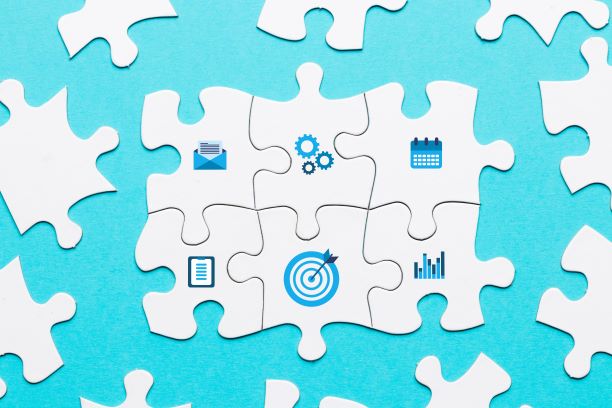
Working in a Matrix
Today’s working practices reflect a connected, interactive global economy. The days of working in the same space with the same people for years is long gone. Instead, mobility, agility, collaboration and virtual working environments are the norm.
For consultants, who have to work in this matrixed environment, spanning the physical world of client engagement and virtual teams requires a high level of awareness and skill. Mastering the matrix is a fundamental skill for every level in consulting.
In this module, you will learn:
- What is a Matrix Organization?
- What is Matrix Management?
- Advantages and Disadvantages in Matrix Management and in Matrix Project Management
- Matrix Leadership
- What are the Key Required Skills?
And we summarize some of the critical success factors.

The Blue Ocean Strategy
Strategic success is linked to innovation by creating a market space that is uncrowded and fertile, delivering growth for companies, and more value to their customers. This space is the blue ocean, in contrast to the red ocean, filled with the competition eating each other.
The blue ocean strategy challenges companies to stay out of the red ocean of bloody competition by creating an uncontested market space. This renders the competition irrelevant, or at least defers their market entry.
We explain the blue ocean strategy and how to make the shift by explaining three topics:
- What is the blue ocean strategy and how does it work
- What is the blue ocean strategy shift
- What are the 5 steps of the blue ocean strategy shift

The Business Model Canvas
The Business Model Canvas (BMC), enables a structured, established organization to evaluate and reflect on whether a business model is effective or not. In the form of a visual chart, it has elements describing a firm’s or product’s value proposition, infrastructure, customer base, and financial structure.
The BMC assists firms in aligning their activities by illustrating, discussing, and deciding on the potential trade-offs. It introduces a systematic approach to focus on a business model segment by segment. It allows for a clean review and discussion by brainstorming the segments, one by one, and to compare several options or paths required to innovatively impact the business model.
The Business Model Canvas is also sometimes referred to as strategy-on-a page. Topics covered in this module are:
- What is the Business Model Canvas
- The 9 sections of the Business Model Canvas
- What are the elements of the Business Model Canvas
- The Business Model Canvas for Startups and Entrepreneurs
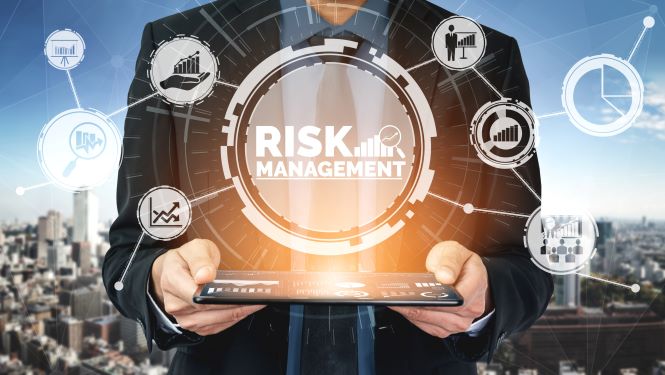
Project Risk Management
Whatever project we undertake, they all have inherent risk associated with them. We need a risk management strategy for each project, so we can effectively deal with the ramifications resulting from each of the risks.
In this module we introduce you to project risk management by exploring the following topics:
- What is Project Risk Management?
- How pervasive is risk?
- How to Identify and assess risks
- How to mitigate risks
- How to plan and control risks
- How to deal with opportunities arising from risks
- How to manage project risks
- How to develop a risk management plan

Systems Thinking
In this module, we will introduce you to systems thinking. Some definitions will be helpful. A system is a group or combination of components that work together to achieve the intended goal or objective. A failure or weakness in one of its components will cause the system to fail.
Systems thinking is an innovative way to look at what we see and to construct a mental framework of it. The entity or construct is looked at as a whole. It looks at it in relation to a larger context or to the environment.
We explore this through the following topics:
- What is systems thinking
- How to use systems thinking
- Why and when to use systems thinking
- What are the other types of thinking

Waterfall versus Agile
Traditionally, waterfall project management has been the predominant way to complete most projects.
However, during the past 20 years, we have seen a strong increase in the use of agile methodologies. Over just the past ten years, the use of agile has nearly quadrupled. Up to 90 percent of organizations use some form of agile. Figures indicate that half or more companies use agile to manage a majority of their projects.
This has a severe impact on project managers who come from a traditional project management background, especially keeping in mind that there is not a formally defined role for a project manager in agile methods.
We compare the methods here through exploration of the following topics:
- A brief introduction to Waterfall
- An introduction to Agile Project Management
- Plan-driven versus Adaptive Project Management
- The Hybrid Agile Approach

What is a Balanced Scorecard
The Balanced Scorecard, also referred to as ‘BSC’, is a strategy performance management tool, in a semi-standard structured form, which is used by managers to keep track of the execution of activities by employees within their span of control, and to monitor the consequences and results arising from their work.
The balanced scorecard model was first developed by Robert Kaplan and David Norton. It is a valuable supplement to the traditional business measurement focus on lagging past performance. The Balanced Scorecard relieves this limitation by providing a way to assess future performance, thus better informing and guiding strategic development. Learn about the BSC by exploring the key topics of this module:
- What is a Balanced Scorecard
- How to Use a Balanced Scorecard

What is Consulting and Why Do We Need It
Consulting is giving expert advice or guidance in different fields such as business aspects, technology, education, law, regulatory compliance, human resources, marketing, finance, health care, engineering, science, security, or any of many other specialized areas.
Consultants use their niche or broad experience, their industry understanding, and their problem-solving abilities to offer valuable advice and solutions to problems and issues. In today’s world, it is crucial for businesses to find ways to grow and keep ahead of the competition.
Keeping up with daily operations is often hard enough and keeps management very busy. It is not always easy, or even possible to recruit and hire expert help to focus on revenue growth, expense control, strategy, training, or branding. To fill these gaps, many businesses, whether large or small, use the services of consultants.
The focus of this module is to provide an overview of consulting that focuses on the different areas that affect business and technology.